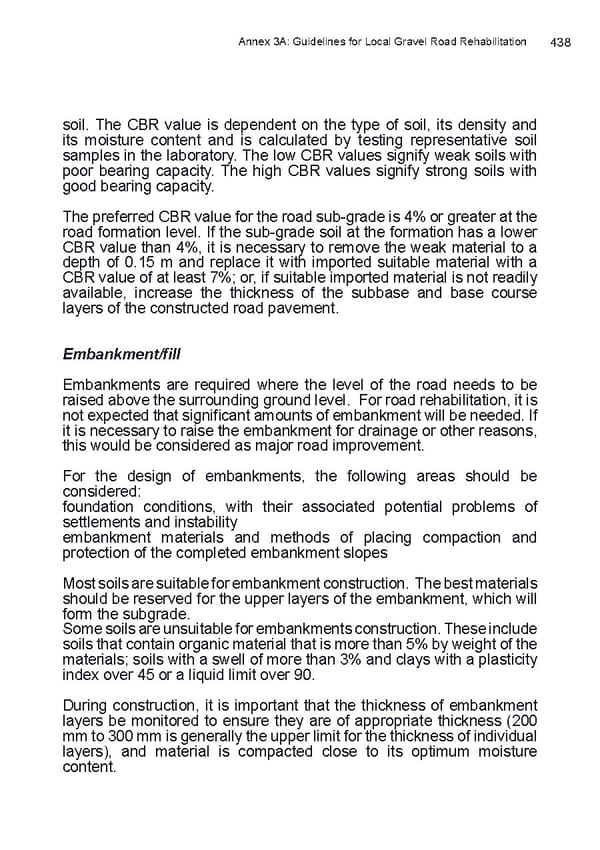Annex 3A: Guidelines for Local Gravel Road Rehabilitation 438 soil. The CBR value is dependent on the type of soil, its density and its moisture content and is calculated by testing representative soil samples in the laboratory. The low CBR values signify weak soils with poor bearing capacity. The high CBR values signify strong soils with good bearing capacity. The preferred CBR value for the road sub-grade is 4% or greater at the road formation level. If the sub-grade soil at the formation has a lower CBR value than 4%, it is necessary to remove the weak material to a depth of 0.15 m and replace it with imported suitable material with a CBR value of at least 7%; or, if suitable imported material is not readily available, increase the thickness of the subbase and base course layers of the constructed road pavement. Embankment/ifll Embankments are required where the level of the road needs to be raised above the surrounding ground level. For road rehabilitation, it is not expected that signiifcant amounts of embankment will be needed. If it is necessary to raise the embankment for drainage or other reasons, this would be considered as major road improvement. For the design of embankments, the following areas should be considered: foundation conditions, with their associated potential problems of settlements and instability embankment materials and methods of placing compaction and protection of the completed embankment slopes Most soils are suitable for embankment construction. The best materials should be reserved for the upper layers of the embankment, which will form the subgrade. Some soils are unsuitable for embankments construction. These include soils that contain organic material that is more than 5% by weight of the materials; soils with a swell of more than 3% and clays with a plasticity index over 45 or a liquid limit over 90. During construction, it is important that the thickness of embankment layers be monitored to ensure they are of appropriate thickness (200 mm to 300 mm is generally the upper limit for the thickness of individual layers), and material is compacted close to its optimum moisture content.
 LRM Manual CMGP Page 437 Page 439
LRM Manual CMGP Page 437 Page 439